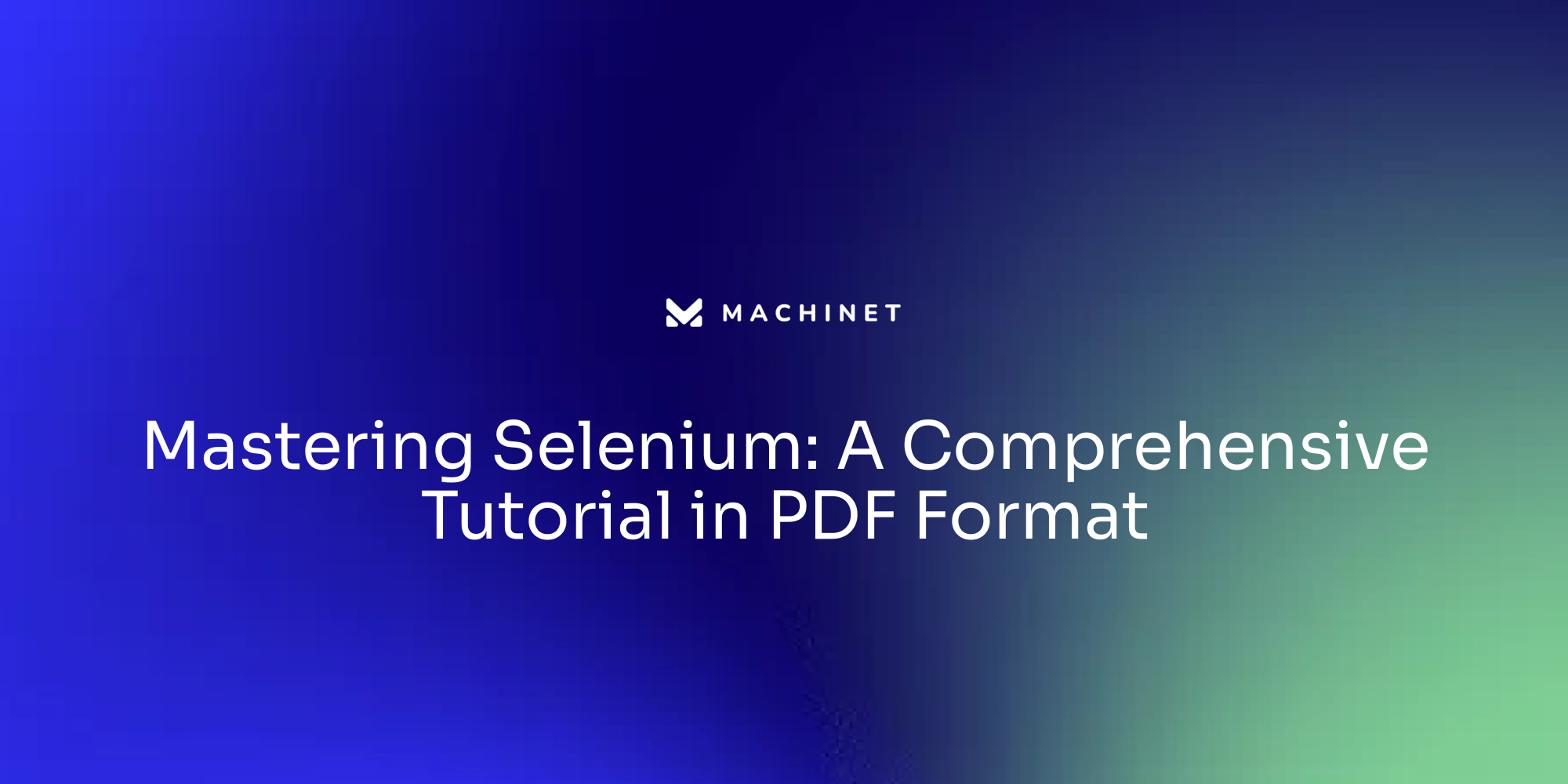
Introduction
Software testing is a critical aspect of the development process, ensuring that applications perform as expected and deliver a seamless user experience. This article delves into the intricacies of test cases and test scenarios, highlighting their pivotal roles in the testing framework. It explores the essential components of a test case, such as Test Case ID, Test Case Title, Preconditions, Input Data, Steps to Reproduce, and Expected Results, and explains their significance in achieving robust testing outcomes.
The discussion extends to the importance of writing effective test cases, emphasizing how well-crafted cases enhance communication among team members, provide clear testing guidelines, and serve as valuable documentation for future reference. It also covers step-by-step guidance on writing test cases, best practices for maintaining clarity and consistency, and various test case design techniques that improve testing efficiency.
Furthermore, the article examines the impact of test management tools in streamlining the creation, organization, and execution of test cases. It underscores the transformative role of AI-driven testing tools in increasing test coverage, reducing testing time, and minimizing bugs in production. By leveraging these insights and tools, developers can ensure thorough and effective testing, ultimately leading to more reliable and user-friendly software applications.
Understanding Test Cases and Test Scenarios
Test scenarios are the backbone of software testing, serving as systematic and structured instructions to assess the functionality, reliability, and overall quality of a software application. Every evaluation scenario is carefully designed by assessors and encompasses particular aims, such as verifying functionalities, guaranteeing suitable integration, or detecting possible issues.
Key components of a test case include:
- Test Case ID: A unique identifier for easy reference and tracking.
- Case Title: A concise and descriptive title that reflects the purpose of the examination.
- Preconditions: Essential requirements that must be fulfilled prior to running the evaluation.
- Input Data: Specific data inputs or conditions required for the evaluation.
- Steps to Reproduce: A step-by-step guide on how to execute the test case.
- Expected Results: The anticipated outcomes that validate the software's behavior.
Understanding these components is crucial for ensuring the robustness and effectiveness of the testing process. In contrast, examination scenarios are high-level descriptions focusing on the overall functionality and user experience. They offer a wider perspective on what to evaluate and ensure that all potential user interactions are taken into account.
In today's rapid software development setting, keeping high-quality evaluations is essential. A systematic literature review has indicated that fewer than half of the studies performed quality evaluations of primary research, emphasizing the necessity for a thorough model to evaluate quality. Moreover, the average execution duration has a strong positive relationship with flakiness, emphasizing the significance of well-organized scenarios to reduce the adverse impacts of flakiness.
By differentiating between comprehensive evaluation examples and broad assessment scenarios, developers can guarantee meticulous and efficient examination, ultimately resulting in more dependable and user-friendly applications.

The Importance of Writing Effective Test Cases
Efficient evaluation scenarios are the foundation of application assessment, guaranteeing thorough coverage and prompt detection of flaws. Every evaluation scenario is carefully designed with distinct goals, such as verifying functionalities or guaranteeing correct integration. These instances outline a series of steps, inputs, conditions, and anticipated results, systematically verifying various aspects of the software's behavior.
Essential elements of an examination scenario incorporate a distinct Identification Number for convenient reference and monitoring, a detailed Title, and Preconditions that need to be met prior to execution. Input Data specifies the necessary data, while Steps to Reproduce provide a step-by-step guide for execution.
Automated scenario creation has transformed the evaluation process, utilizing algorithms to generate examples covering various situations, including edge instances and performance standards. This significantly lessens the effort needed compared to manual methods, enhancing coverage and efficiency.
In the current rapid application development landscape, AI-powered assessment tools can produce evaluation scenarios automatically, guaranteeing thorough coverage and conserving time. These tools perform evaluations more quickly and precisely, enabling QA teams to concentrate on other essential elements of assessment and development.
The caliber of a program is largely reliant on the standard of its examination scenarios. Well-crafted assessments not only enhance communication among team members but also offer clear instructions for evaluation and act as important documentation for future reference. By enhancing the efficiency of the testing process, they play a crucial role in maintaining the overall quality and reliability of the application.

Step-by-Step Guide to Writing Test Cases
- Identify the requirement or feature to be tested. Every examination should have a specific aim, such as verifying a certain functionality or guaranteeing appropriate integration. 2. Define the evaluation goal, outlining what aspect of the software's functionality or performance you aim to assess. 3. Specify the preconditions, detailing the necessary conditions that must be satisfied before carrying out the examination. 4. Clearly outline the procedure steps in a sequential manner, providing a step-by-step guide on how to execute the scenario. 5. 'Define the expected results based on the requirements, specifying the anticipated outcomes or behavior after executing the examination.'. 6. Include postconditions if necessary, detailing what should happen after testing. 7. Review and modify the examination scenario for clarity and completeness, ensuring that it encompasses various situations to thoroughly evaluate the program. A clearly specified examination scenario is essential to systematically detect any flaws or discrepancies in the software.
Best Practices for Writing Test Cases
- Ensure each examination scenario is clear and straightforward to avoid misunderstanding. This involves having specific objectives and defining preconditions, steps to reproduce, and expected outcomes clearly. - Implementing uniform naming standards for evaluations aids in straightforward recognition and monitoring. For instance, using a unique Test Case ID and a concise, descriptive title can facilitate this. - Rank evaluation scenarios by analyzing their risk and importance to the overall performance of the application. Identifying which aspects of the software are most crucial can help in focusing testing efforts effectively. - Create evaluation scenarios to be reusable and maintainable. This means they should be adaptable to changes in requirements or functionality, ensuring they remain relevant over time. - Consistently refresh evaluation scenarios to represent any modifications in the application's specifications or features. This involves revisiting and revising input data, steps, and expected outcomes to align with the current state of the software.

Test Case Design Techniques
Multiple methods can be utilized for creating evaluations, including equivalence partitioning, boundary value analysis, state transition evaluation, and decision table evaluation. Equivalence partitioning helps in grouping input values into classes expected to exhibit similar behavior, ensuring comprehensive coverage with fewer test cases. Boundary value analysis focuses on the edges of these classes, targeting potential failure points. State transition evaluation examines the software’s behavior as it moves between different states, ensuring that all state changes are managed correctly. Decision table evaluation offers a structured method to capture intricate business rules, ensuring that all possible combinations of conditions are assessed.
These methods aid in the development of productive evaluation scenarios that encompass different situations, thus enhancing the effectiveness of the assessment procedure. Based on sector data, firms employing strong evaluation design methods indicate up to a 40% reduction in examination duration and a 60% drop in defects identified in production. This highlights the significance of using organized methods for scenario design to improve software quality and dependability.

Managing Test Cases with Tools
Utilizing management tools greatly simplifies the development, arrangement, and implementation of evaluation scenarios. Platforms like JIRA, TestRail, and Zephyr are instrumental in tracking test progress, managing test case repositories, and integrating with other development tools. This integration not only enhances collaboration but also boosts efficiency. As Ian Dunbar-Hall from Lockheed Martin notes, such tools allow teams to establish a fully functional CI pipeline in just 30 minutes, a process that previously took up to 40 hours. The adoption of these tools leads to improved code quality, reducing the frequency of breaking changes in production environments.
Moreover, automated evaluation tools have transformed the assessment process, delivering consistent and precise results while removing the chance of human error. Based on industry data, businesses employing AI-powered evaluation tools have experienced up to a 40% cut in assessment duration and a 60% drop in defects identified in production. This emphasizes the transformative influence of these tools on the evaluation process. Furthermore, the World Quality Report indicates that only 56% of organizations attain satisfactory evaluation coverage, a gap that AI-driven assessment can bridge by enhancing coverage by up to 85%.
In practice, organizations like California State University have successfully implemented structured evaluation environments using tools like Postman, which have streamlined the assessment process by eliminating repetitive steps and facilitating collaboration. This has led to accelerated project progress and enhanced transparency. In the same way, the application of specialized tools like TestProf, as shown in a Ruby on Rails project, has led to considerable improvements in the suite of evaluations by optimizing scripts and refactoring particular files. These advancements underscore the importance of utilizing robust test management tools to achieve comprehensive and efficient testing processes.

Conclusion
Thorough understanding and implementation of test cases and test scenarios are essential for effective software testing. Test cases serve as detailed instructions that assess functionality and quality, while test scenarios provide a broader context of user interactions. Recognizing the key components of test cases—such as Test Case ID, Preconditions, Input Data, and Expected Results—plays a crucial role in ensuring robust testing outcomes.
Writing effective test cases is fundamental for identifying defects early and enhancing communication among team members. Utilizing automated test case generation and AI-driven testing tools can significantly improve test coverage and reduce execution time, allowing QA teams to concentrate on critical areas of development. Best practices, including clarity, consistency, and regular updates, are vital for maintaining high-quality test cases that adapt with changing requirements.
Employing various test case design techniques, such as equivalence partitioning and boundary value analysis, further enhances the efficiency of the testing process. The integration of test management tools streamlines the organization and execution of test cases, leading to improved collaboration and code quality. Overall, leveraging these strategies and tools is key to achieving comprehensive testing, ultimately resulting in more reliable and user-friendly software applications.
AI agent for developers
Boost your productivity with Mate. Easily connect your project, generate code, and debug smarter - all powered by AI.
Do you want to solve problems like this faster? Download Mate for free now.




